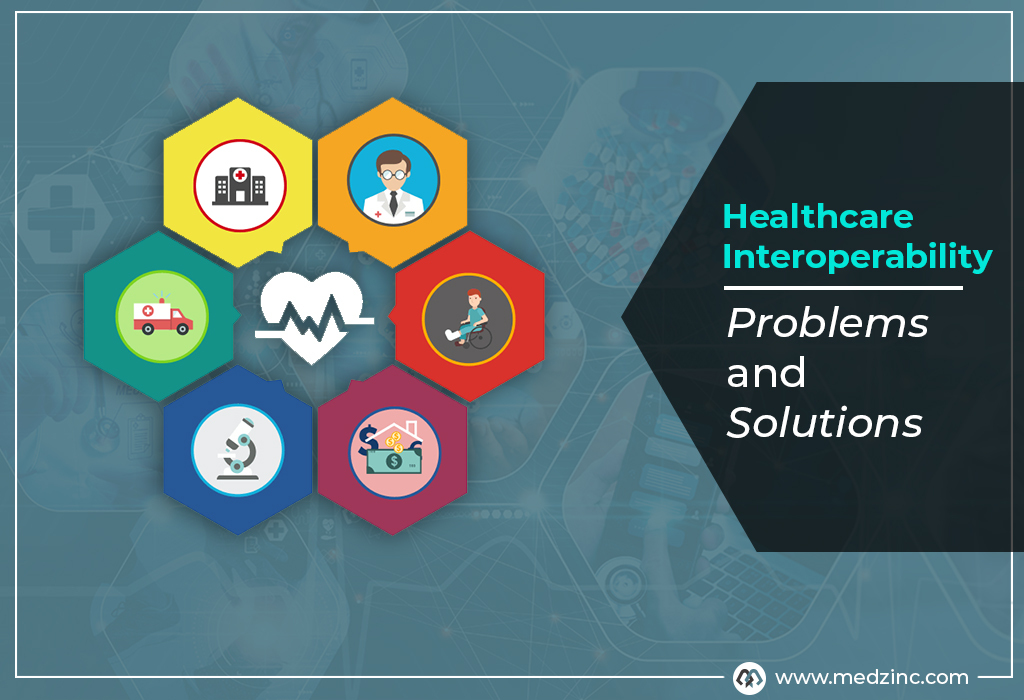
The Problem of Interoperability in healthcare and How to Solve it
One of the most data-driven industries in the world is healthcare. Over 10 million devices are already communicating with one another and exchanging data via APIs around the world. However, the biggest issue confronting this massive industry is interoperability between EMR systems. However, In healthcare, the term “interoperability” refers to the ability of different systems and devices to work together (i.e., share data and information) in order to provide a coordinated care experience for patients. The Problem of Interoperability in healthcare is that many healthcare organisations have proprietary systems that are not compatible with one another, which can lead to a fragmented and inefficient care delivery process.. In addition, there are silos within the healthcare system, which prevent information from flowing freely between different parts of the system.And achieving & maintaining a truly interoperable system in healthcare presents enormous problems. The good news is that there are ways to overcome these problems and improve interoperability in healthcare. Therefore, to simplify these problems of Interoperability in healthcare we at medzinc with extensive research have crafted this blog where. You will be learning about the problem of interoperability in healthcare and how to solve it.
What is Interoperability in healthcare?
Interoperability in healthcare is the ability of different medical devices and software systems to work together. This means that a patient's medical records can be accessed by any doctor or healthcare provider, regardless of which system they use. Interoperability is essential for providing quality care and improving patient outcomes. It helps to ensure that all of a patient's medical information is available to their care team, so that everyone is on the same page and can make informed decisions about treatment. /*! elementor - v3.7.4 - 31-08-2022 */<br /> .elementor-widget-image{text-align:center}.elementor-widget-image a{display:inline-block}.elementor-widget-image a img[src$=".svg"]{width:48px}.elementor-widget-image img{vertical-align:middle;display:inline-block}
The Problem of Interoperability in healthcare and Why it affects us so much.
The Problem of Interoperability is that many healthcare organisations have proprietary systems that are not compatible with one another, which can lead to a fragmented and inefficient care delivery process. There are a number of reasons why interoperability is such a challenge in healthcare, including
- Inconsistency of health data available across the network
One of the major issues with healthcare interoperability is the inconsistency of health data available across the network. That is also true, particularly among healthcare IT vendors with large health networks. They store various pieces of data in multiple, often disparate locations, causing the healthcare IT department to waste endless hours looking for them.
- Meaningful health data readily accessible
Another issue with healthcare interoperability is the availability of meaningful health data. This is one of the major issues with interoperability because it creates a barrier for EMR/EHR systems to interact with one another. The issue arises because data in each EMR system is sorted in different standards or formats. Some EHR systems use HL7 V1 or V2 standards, while others use FHIR. Thus making it difficult for them to be interoperable.
- Patient information validation
Next up in line is the Problem of Patient information validation. One of the most key responsibilities of any healthcare system is to make the patient's sensitive data safe. But with EMR systems not being interoperable it makes it difficult for EHR systems to validate the data sorted in other systems. Which leads to difficulty in analysing patient past medical history & in decision making.
- A Cost effective health interoperability management.
It takes a lot of effort to achieve interoperable EHRs. No single person in most healthcare settings has the time, let alone the qualifications, to maintain pace with this daily task. However, hiring someone skilled to preserve EHR interoperability is costly, particularly for smaller organisations.
How to Solve the Problem of Interoperability in healthcare?
The good news is that there are solutions to the problem of interoperability in healthcare. One solution is to establish standards for how data should be structured and exchanged. The Health Information Technology for Economic and Clinical Health (HITECH) Act, enacted in 2009, has helped to establish some standards related to health information exchange. Another solution is to develop new technologies that facilitate interoperability. For example, the Fast Healthcare Interoperability Resources (FHIR) standard defines how information can be exchanged between different EHR systems. Similarly, APIs (Application Programming Interfaces) can be used to allow different software applications to interact with each other easily.
How is medzinc efficiently & Effectively solving the Problem of Interoperability in healthcare ?
medzinc Unify and secure the medical data exchange with Privacy, Control, and Traceability to facilitate augmented care coordination and to Improve healthcare outcomes. It creates a healthcare ecosystem that is sustainable, ubiquitous, and secure. Moreover, it simplifies health data interoperability so that it crystallises a sustainable healthcare ecosystem and enables healthcare omnipresence. Simplifying the prominent problem of interoperability in healthcare it makes .
- Meaningful health data readily accessible.
- Eases Patient information validation electronically.
- Cost effective health interoperability management.
- Consistent health information availability across the Network.

Conclusion: The Future is Near
Healthcare interoperability is a big problem, but it's one that we can solve with the right tools and processes in place. By working together to standardise data formats and improve communication protocols, we can make it easier for different healthcare systems to talk to each other and exchange information. This will ultimately lead to better patient care, as well as more efficient and cost-effective healthcare delivery. Check out our other blogs here.
Related Post
No results.